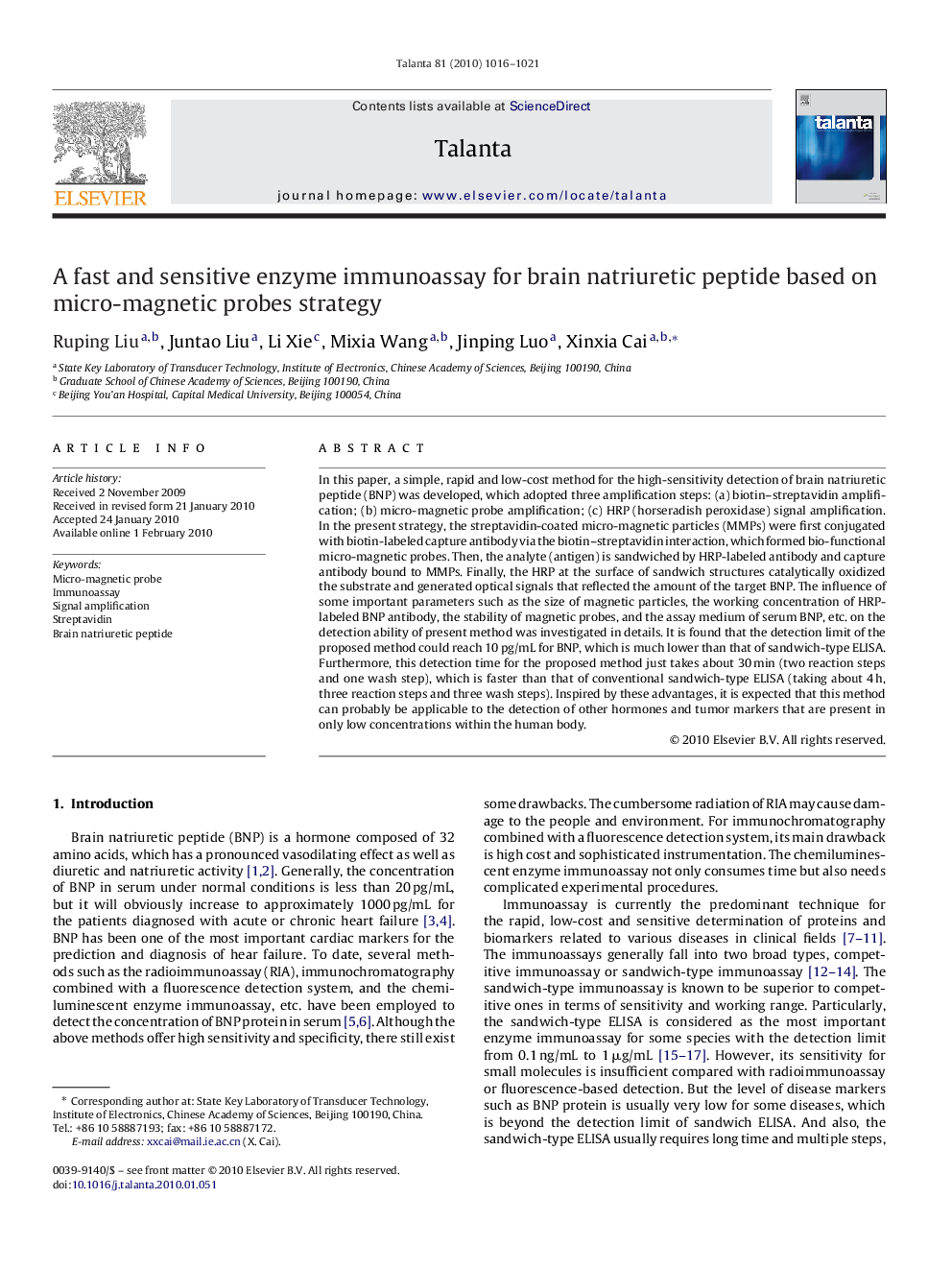| Article ID | Journal | Published Year | Pages | File Type |
|---|---|---|---|---|
| 1246530 | Talanta | 2010 | 6 Pages |
In this paper, a simple, rapid and low-cost method for the high-sensitivity detection of brain natriuretic peptide (BNP) was developed, which adopted three amplification steps: (a) biotin–streptavidin amplification; (b) micro-magnetic probe amplification; (c) HRP (horseradish peroxidase) signal amplification. In the present strategy, the streptavidin-coated micro-magnetic particles (MMPs) were first conjugated with biotin-labeled capture antibody via the biotin–streptavidin interaction, which formed bio-functional micro-magnetic probes. Then, the analyte (antigen) is sandwiched by HRP-labeled antibody and capture antibody bound to MMPs. Finally, the HRP at the surface of sandwich structures catalytically oxidized the substrate and generated optical signals that reflected the amount of the target BNP. The influence of some important parameters such as the size of magnetic particles, the working concentration of HRP-labeled BNP antibody, the stability of magnetic probes, and the assay medium of serum BNP, etc. on the detection ability of present method was investigated in details. It is found that the detection limit of the proposed method could reach 10 pg/mL for BNP, which is much lower than that of sandwich-type ELISA. Furthermore, this detection time for the proposed method just takes about 30 min (two reaction steps and one wash step), which is faster than that of conventional sandwich-type ELISA (taking about 4 h, three reaction steps and three wash steps). Inspired by these advantages, it is expected that this method can probably be applicable to the detection of other hormones and tumor markers that are present in only low concentrations within the human body.
